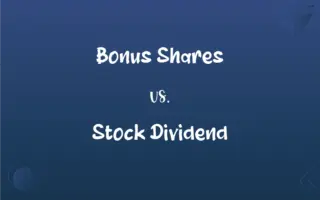Primary Group vs. Secondary Group: What's the Difference?
Edited by Harlon Moss || By Janet White || Published on December 2, 2023
A primary group is a small, close-knit, and enduring personal association, whereas a secondary group is larger, more impersonal, and goal-oriented.

Key Differences
A primary group is characterized by intimate, face-to-face association and cooperation. It's typically a small group where relationships are personal and enduring, like family or close friends. Secondary groups, on the other hand, are larger and more impersonal. They are often goal or task-oriented, like a workplace team or a classroom.
In a primary group, members have a strong emotional attachment to each other. This group significantly influences the attitudes and ideals of its members. Conversely, in a secondary group, relationships are more pragmatic and less emotional, with a focus on the group's objectives rather than personal bonds.
Primary groups play a crucial role in the development of personal identity and social skills. They are often the source of emotional support and comfort. In contrast, secondary groups contribute to the formation of a broader societal role and professional identity, focusing on specific roles or tasks.
The interactions in a primary group are usually informal and spontaneous. These groups are essential for socializing individuals into societal norms. Secondary groups have more formal, structured interactions, often organized around specific goals or activities.
The size of a primary group is generally small, allowing for in-depth, meaningful interactions. Secondary groups can vary in size but are usually larger, accommodating more formal and less personal interactions.
ADVERTISEMENT
Comparison Chart
Size
Small
Large
Relationship Type
Personal and enduring
Impersonal and temporary
Emotional Depth
High emotional attachment
Limited emotional involvement
Purpose
Socialization and emotional support
Goal or task-oriented
Interaction Nature
Informal and intimate
Formal and organized
ADVERTISEMENT
Primary Group and Secondary Group Definitions
Primary Group
A foundational social group essential for emotional and psychological development.
Growing up, my neighborhood playgroup was my primary group, crucial for my social development.
Secondary Group
A large, impersonal group focused on achieving specific goals.
My company, a secondary group, collaborates to meet business objectives.
Primary Group
A small, close-knit group with intimate, enduring relationships.
My family is my primary group, providing unconditional love and support.
Secondary Group
A group marked by formal, temporary associations.
The project team at work is a secondary group, formed only for the duration of the project.
Primary Group
A group that significantly shapes its members' attitudes and values.
My peer group at school, a primary group, influences my perspectives and beliefs.
Secondary Group
A group where relationships are based on roles and tasks.
In my college class, a secondary group, we interact mainly for academic purposes.
Primary Group
A group where members share personal and lasting bonds.
The bond I share with my childhood friends, my primary group, is irreplaceable.
Secondary Group
A group characterized by limited emotional depth and involvement.
I am part of a city committee, a secondary group, where we focus on civic issues, not personal ones.
Primary Group
A social group characterized by direct, face-to-face interactions.
My book club, a primary group, meets weekly for intimate discussions.
Secondary Group
A group that influences broader societal roles and professional identity.
My professional association, a secondary group, shapes my career development.
FAQs
What is an example of a primary group?
Family and close circle of friends.
Can a primary group change over time?
Yes, but its core characteristic of close emotional bonds remains constant.
What is a secondary group?
A larger, more impersonal group focused on specific goals or tasks.
Can someone be part of multiple secondary groups?
Yes, it's common to belong to various secondary groups.
How do relationships in secondary groups differ from primary groups?
They are more impersonal, formal, and often temporary.
What is the main focus of a secondary group?
Achieving specific objectives or tasks.
What is a primary group?
A small, close-knit group with intimate and enduring relationships.
What is the role of a primary group in socialization?
It plays a crucial role in developing personal identity and social skills.
Are secondary groups important for professional development?
Yes, they play a key role in professional identity and societal roles.
What characterizes a primary group?
Emotional depth, enduring personal bonds, and face-to-face interactions.
How does a primary group influence behavior?
It significantly shapes attitudes, values, and norms.
Do primary groups have a large number of members?
No, they are typically small to maintain close relationships.
Can a group be both primary and secondary?
Rarely, as their characteristics are usually distinct.
What is an example of a secondary group?
Workplace teams or a university classroom.
Are secondary groups essential for networking?
Yes, they provide opportunities for professional and social networking.
Do primary groups have formal structures?
No, they are usually informal and spontaneous.
What kind of communication is prevalent in secondary groups?
More formal and structured communication.
Is emotional support a key function of secondary groups?
No, this is more characteristic of primary groups.
Are secondary groups less important than primary groups?
No, both serve different but essential roles in an individual's life.
How does one join a primary group?
Often through personal connections and natural social interactions.
About Author
Written by
Janet WhiteJanet White has been an esteemed writer and blogger for Difference Wiki. Holding a Master's degree in Science and Medical Journalism from the prestigious Boston University, she has consistently demonstrated her expertise and passion for her field. When she's not immersed in her work, Janet relishes her time exercising, delving into a good book, and cherishing moments with friends and family.
Edited by
Harlon MossHarlon is a seasoned quality moderator and accomplished content writer for Difference Wiki. An alumnus of the prestigious University of California, he earned his degree in Computer Science. Leveraging his academic background, Harlon brings a meticulous and informed perspective to his work, ensuring content accuracy and excellence.

































































